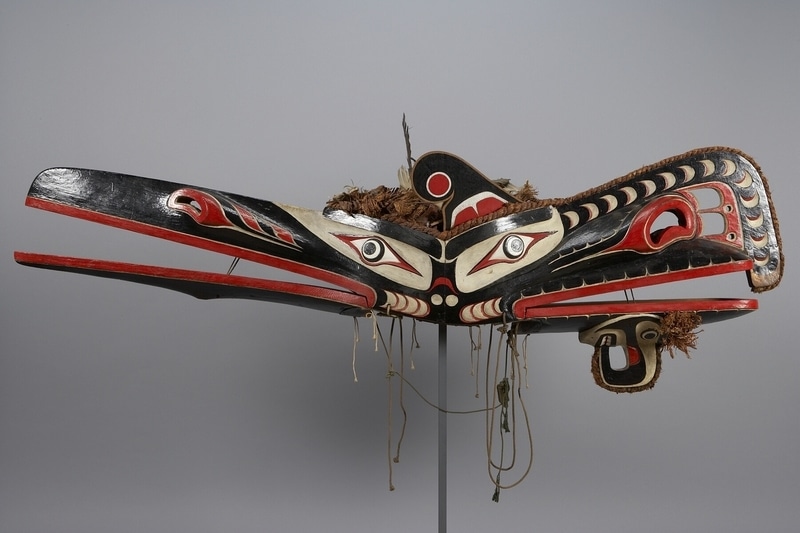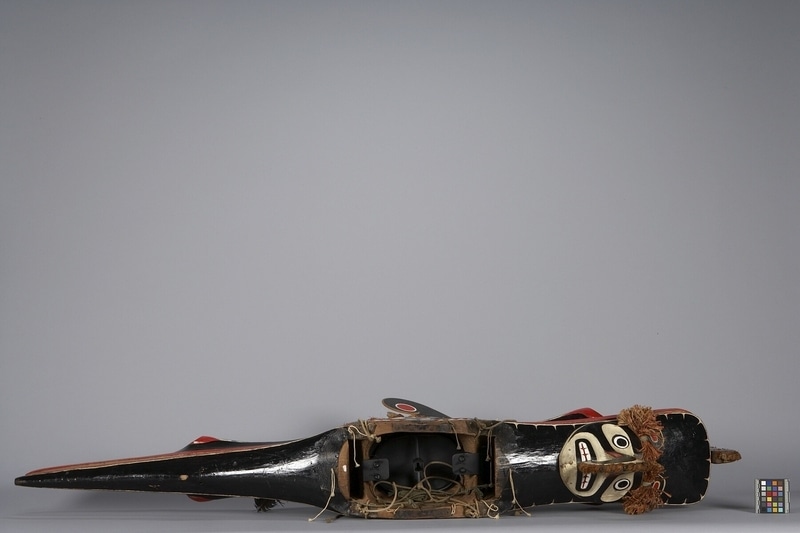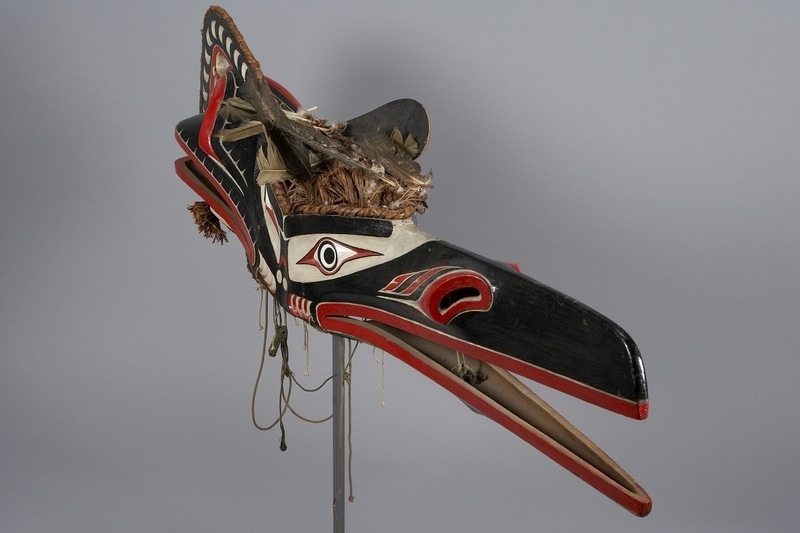Mask Item Number: A7992 from the MOA: University of British Columbia




Description
Carved wooden, double headed Hamatsa mask consisting of crooked beak and raven mask joined at the back of each. Both have red, ovoid shaped cutout nostrils with red and white detailing around it. Both have a red mouth; one is long, narrow and protruding the other is flat, square shaped and protruding. On underside of crooked beak's lower jaw is a small carved thunderbird ? face with a beak that curves back into the open mouth; small bundles of cedar decorate the top edge of face. The eyes are black ovoids, outlined in white and red on a green ovoid shaped ground; the brow is black. The inside is hollow with the exception of twine which articulates the mask. Both masks have twisted cedar rope around the crown; crooked beak has cedar rope along the edge of the frill. Cedar bark and feathers decorate the top of both heads; tufts of eagle down intertwined. Attached to the top of the crooked beak are two black wooden horns that curl at the top; detailed with a red circle. The mask is painted black, red and white with Northwest Coast stylized forms.
History Of Use
Worn by Hamats!a dancer.
Iconographic Meaning
Represents Crooked Beak of Heaven, Galugwadzawe', and Raven at the north end of the world, Gwaxgwaxwalanuxsiwe', servants of Cannibal at the north end of the world.
Narrative
Mask came from Joe Seaweed's wife's family. According to Bill Holm in "Smoky Top" this mask was made by Seaweed to replace an earlier version that he sold.
Item History
- Made by Willie Seaweed (Maker) in Blunden Harbour, British Columbia, Canada ? or Ba'as, British Columbia, Canada ? during 1920
- Collected in Blunden Harbour, British Columbia, Canada and Ba'as, British Columbia, Canada
- Owned by Willie Seaweed
- Owned by Canadian Cabin Crafts before April 1962
- Received from Canadian Cabin Crafts (Seller) and Walter C. Koerner (Funding source) during April 1962
What
- Name
- Mask
- Identification Number
- A7992
- Type of Item
- mask
- Material
- fibre, feather, rubber, cedar bark, cedar wood, metal, eagle down feather, paint and copper metal
- Manufacturing Technique
- carved, twisted, hinged and painted
- Overall
- height 56.2 cm, width 22.7 cm, depth 188.4 cm
Who
- Culture
- Kwakwaka'wakw
- Creator
- Willie Seaweed (Maker)
- Previous Owner
- Willie Seaweed and Canadian Cabin Crafts
- Received from
- Canadian Cabin Crafts (Seller) and Walter C. Koerner (Funding source)
Where
- Holding Institution
- MOA: University of British Columbia
- Made in
- Blunden Harbour, British Columbia, Canada ? or Ba'as, British Columbia, Canada ?
- Collected in
- Blunden Harbour, British Columbia, Canada and Ba'as, British Columbia, Canada
When
- Creation Date
- during 1920
- Ownership Date
- before April 1962
- Acquisition Date
- during April 1962
Other
- Condition
- good
- Current Location
- Case 37
- Accession Number
- 1823/0001